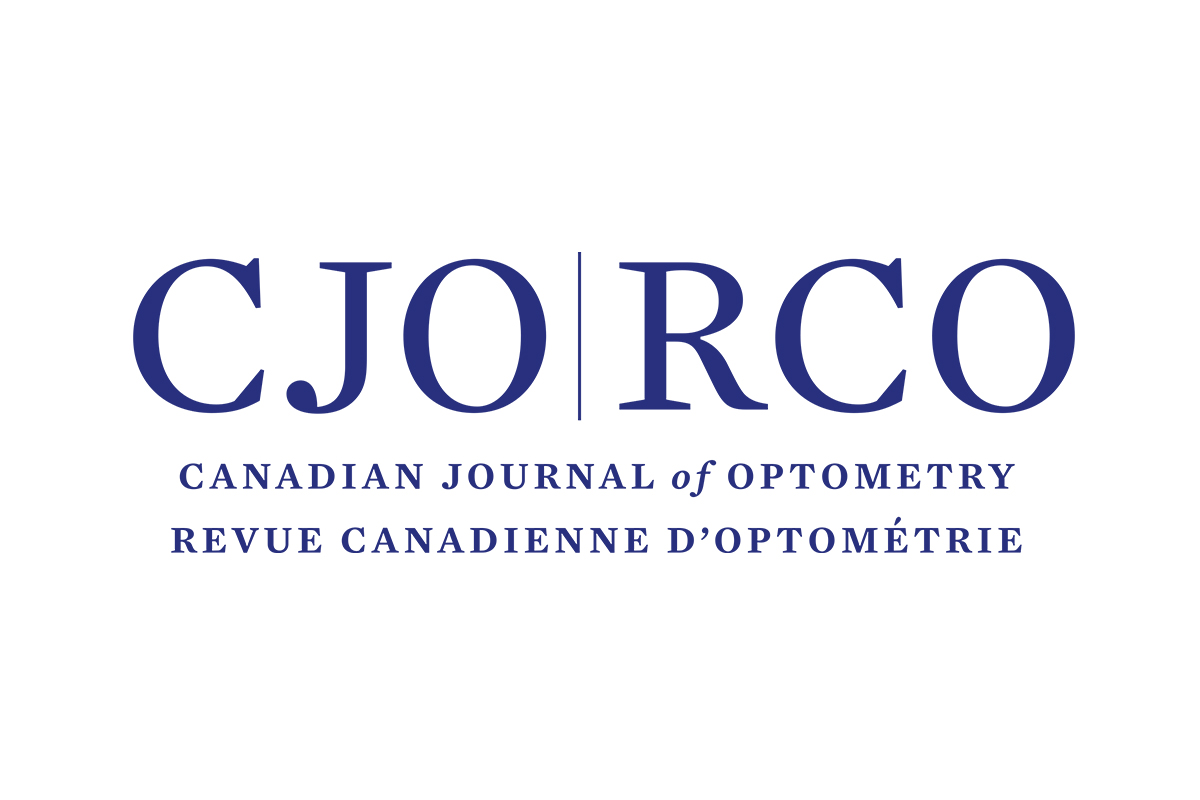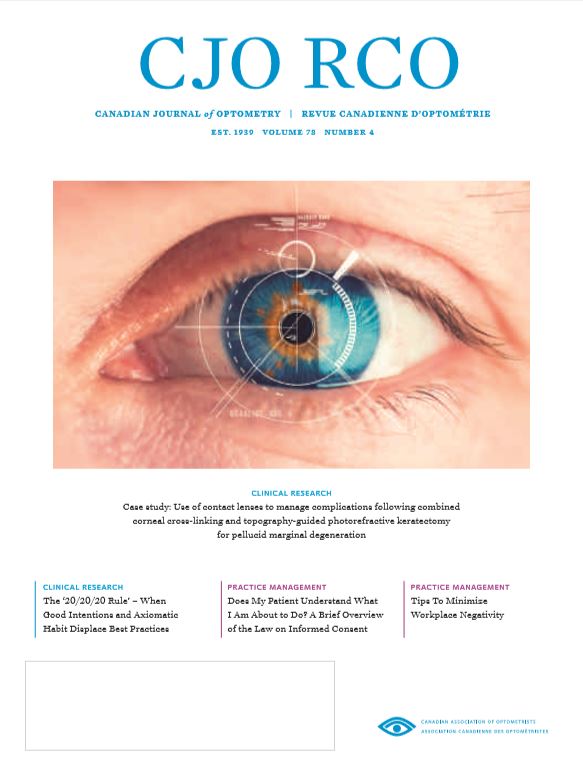The ‘20/20/20 Rule’ – When Good Intentions and Axiomatic Habit Displace Best Practices
DOI :
https://doi.org/10.15353/cjo.78.448Mots-clés :
20/20/20 Rule, myopia, myopigenesis, myopiagenesis, computer vision syndrome, asthenopiaRésumé
Optometrists often proffer the ‘20/20/20 Rule’ as advice for clients who experience nearpoint visual strain, or who are subjected to prolonged exposure to nearpoint devices. The ‘rule’ is offered in the patient’s best interests: To help alleviate asthenopia and visual stress from nearpoint strain, and to reduce the risk of onset or the progression of myopia and associated ocular disease. Best intentions aside, there is a paucity of clinical and scientific support for the rule. On the other hand, modern optical tools and methods, and vision rehabilitation practices are known to be helpful in addressing mild to severe binocular vision disorders, to promote comfort, and to slow the progression of myopia. While offering trite advice to address potentially serious concerns might appear to be helpful, its continued use could well be displacing other more appropriate management strategies. This paper addresses some concerns regarding the promulgation of this well-meaning, but misguided, advice.
Publié-e
Comment citer
Numéro
Rubrique
Licence
© Charles Boulet 2016

Cette œuvre est sous licence Creative Commons Attribution - Pas d'Utilisation Commerciale - Pas de Modification 4.0 International.


